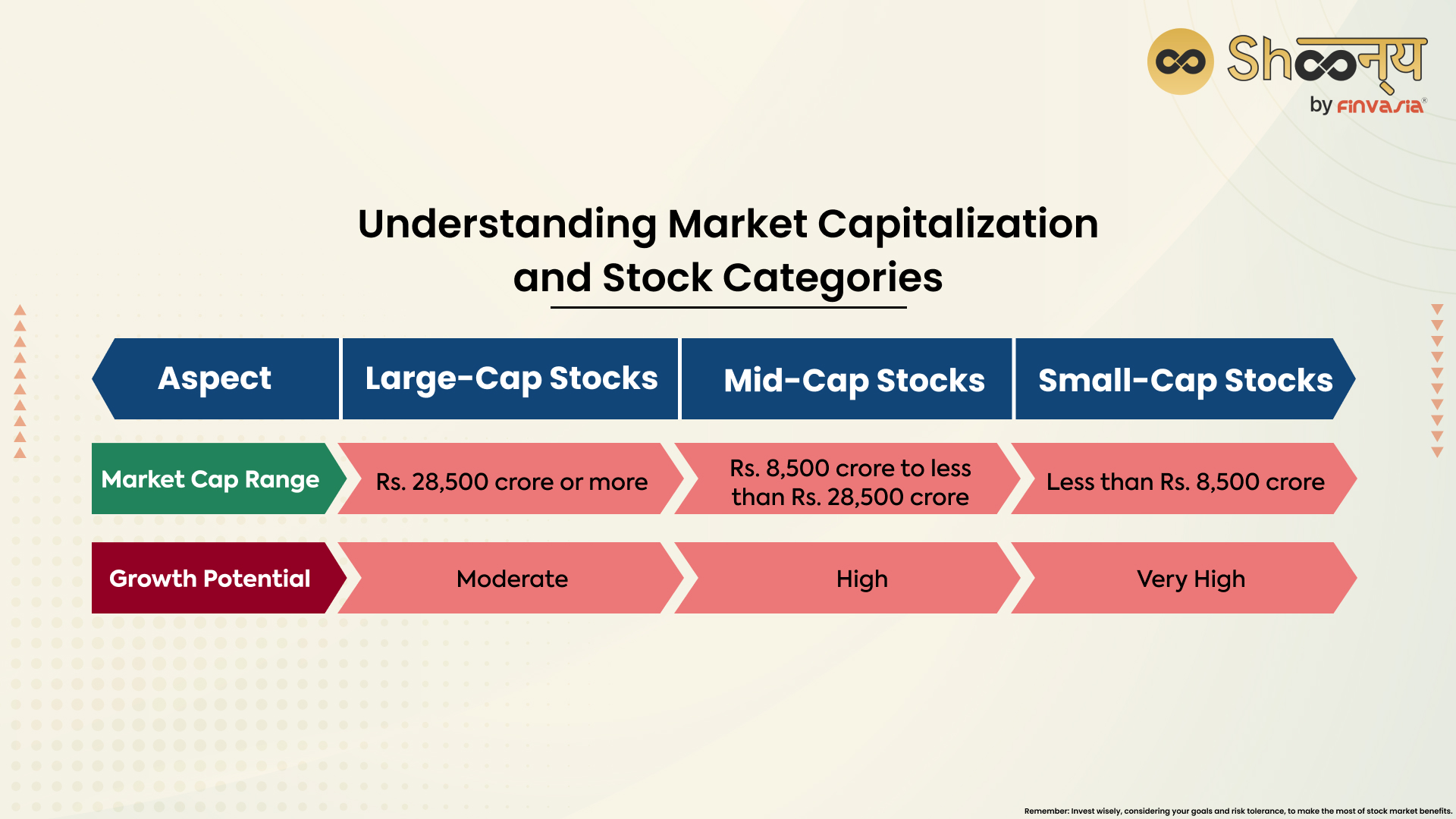Unlocking Growth Potential: Investing in Mid-Cap Stocks for Indian Investors

Investing in the stock market offers a world of opportunities, with stocks categorized by their market capitalization into large-cap, mid-cap, and small-cap segments. For Indian investors seeking to tap into growth potential while managing risks, mid-cap stocks present a compelling option. Let’s delve into the world of mid-cap stocks and explore why they’ve become a favored choice among seasoned investors.
Decoding Mid-Cap Stocks
Imagine a spectrum of companies, ranging from the big players to the smaller ones. Mid-cap stocks fall right in the middle between large-cap and small-cap stocks. These categories are based on market capitalisation – the company’s overall value is based on the total number of shares and their current price.
Mid-Cap Stocks Features
- Moderate Size: Mid-cap stocks are like the Goldilocks of the stock market. They’re not too big and not too small. With a market capitalisation ranging from Rs. 5,000 crore to less than Rs. 20,000 crores, these companies have room to grow while still offering a level of stability.
- Balanced Growth Potential: What makes mid-cap stocks intriguing is their potential for growth. These companies are beyond the initial risky phase of small-caps, yet they still have room to expand, potentially becoming larger players in the future.
- Managed Risk: While mid-cap stocks can be more volatile than large-caps, they’re often less risky than small-caps. This middle ground can provide a balance between potential returns and manageable risk, making them a favorite among investors.
- Diversification Advantage: Diversifying your investment portfolio is like not putting all your eggs in one basket. Including mid-cap stocks alongside other categories can help spread risk, offering a safety net during market ups and downs.
- Untapped Potential: Mid-cap stocks often have less coverage in the media and among analysts compared to large-caps. This can mean there are opportunities to uncover hidden gems before they gain widespread attention.
Understanding Market Capitalization and Stock Categories
Market capitalisation, often referred to as market cap, is a key measure of a company’s valuation. It is calculated by multiplying the total number of outstanding shares by the current share price. The stock market classifies companies based on their market cap into three primary categories: large-cap, mid-cap, and small-cap.
- Large-Cap Stocks: These are well-established giants with a market cap of Rs. 20,000 crore or more. They offer stability and lower volatility, making them suitable for risk-averse investors.
- Mid-Cap Stocks: Falling between large-cap and small-cap, these companies have a market cap ranging from Rs. 5,000 crore to less than Rs. 20,000 crore. While they carry higher volatility than large caps, they also offer higher growth potential.
- Small-Cap Stocks: With a market cap below Rs. 5,000 crores, small-cap stocks are smaller companies with significant growth prospects. They come with higher risks due to their volatility.

Invest in Mid-Cap Stocks: Advantages
- Balancing Risk and Returns: Mid-cap stocks strike a balance between growth potential and risk. Their higher volatility compared to large-caps can lead to substantial returns, making them appealing to investors with a moderate risk appetite.
- Growth Potential: Mid-cap companies have room to expand and potentially become large-cap companies over time. Their ability to capture market share and increase profitability can drive impressive growth.
- Diversification: Building a well-rounded portfolio is essential for risk mitigation. Including mid-cap stocks alongside large-caps and small-caps offers diversification that can shield investors from extreme market fluctuations.
Risks Associated with Mid-Cap Stocks
- Volatility: Mid-cap stocks can experience significant price swings due to their smaller market capitalization and reliance on specific industries or clients. This volatility can impact investment returns.
- Limited Selection: The pool of mid-cap stocks available for investment is narrower compared to large-cap stocks. Selecting the right stocks from this limited pool requires thorough research.
- Speculative Nature: While mid-cap stocks have growth potential, some may lack the financial stability needed to support market speculation. Careful examination of a company’s financial strength is crucial.
Exploring Alternatives Mid-Cap Stocks
If mid-cap stocks’ volatility and risks feel too high for your investment strategy, consider these alternatives:
- Sovereign Bonds: Government-issued bonds provide consistent income over a set period with lower risk.
- Balanced Funds: These funds diversify investments between stocks and debt securities, offering a balanced risk-return profile.
- Debt Funds: Investing in fixed-income instruments like treasury bills and bonds can provide consistent income with relatively lower risk.
Investing Wisely: The Key to Success
Before you plan to invest in mid-cap stocks, you must know that it requires careful consideration and research. Understand your risk tolerance and investment horizon. Seek guidance from experts and stay updated on market trends and company performance. Remember, while mid-cap stocks offer growth potential, every investment carries inherent risks. Make informed decisions aligned with your financial goals to optimise your investment journey.
FAQs| Mid Cap Stocks
Market capitalisation is the total value of a company’s outstanding shares, calculated by multiplying the share price by the number of shares.
Stocks are classified as large-cap, mid-cap, or small-cap based on their market capitalisation. Large-cap stocks have the highest market cap, followed by mid-cap and then small-cap.
Yes, mid-cap stocks are generally riskier than large-cap stocks due to their higher volatility. However, they also offer greater growth potential.
Yes, mid-cap companies have the potential to grow and transition into large-cap companies over time, especially if they demonstrate consistent profitability.
Diversification involves spreading investments across different asset classes and sectors to reduce risk. Including mid-cap stocks in a diversified portfolio can provide growth potential while mitigating overall risk.
Mid-cap stocks are companies that fall between large-cap and small-cap categories in terms of market capitalization. They offer a balanced blend of growth potential and risk, making them appealing to investors.
Determining the “best” mid-cap stock depends on various factors, including your investment goals, risk tolerance, and market conditions. Research and expert advice can help you identify promising options.
Mid-cap stocks can be a good addition to your investment portfolio if you’re looking for a middle ground between growth potential and risk. They offer the chance for higher returns compared to large-caps, while still providing some stability.
The main difference lies in market capitalization. Mid-cap stocks have a moderate market value, typically ranging between large-cap and small-cap stocks. Large-cap stocks are more established and generally have a higher market value, offering more stability but potentially lower growth prospects.
______________________________________________________________________________________
Disclaimer: Investments in the securities market are subject to market risks; read all the related documents carefully before investing.








